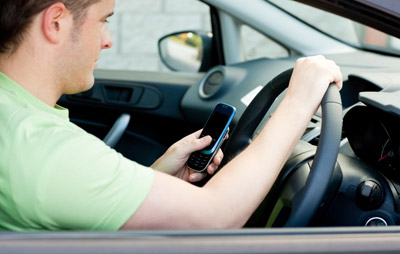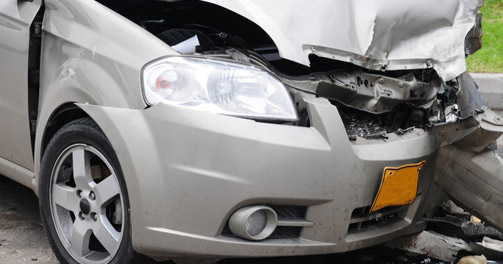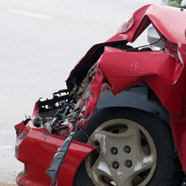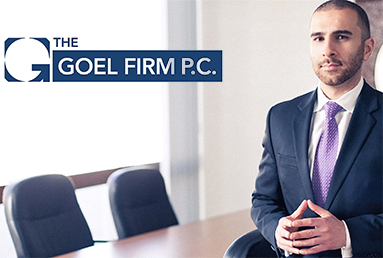Civilian Drones: Privacy and Safety Concerns for the New Generation of Mobile Camera Technology

With the mass adoption of smartphones, tablets and other mobile devices that feature high definition cameras, amateur photography and filming have become increasingly popular. Social media and mobile sharing websites such as Instagram and YouTube contain hundreds of millions of user uploaded images and videos. According to Instagram, over 20 billion user images have been posted on its photo-sharing network at an average of 60 million images per day. These figures do not even include shared videos, a feature Instagram rolled out last year.
This popularity coupled with the advances and affordability of mobile technology has led to a new generation of exceedingly compact and mobile devices such as high-definition wearable cameras and civilian drones that are capable of aerial filming. The leader in wearable and mounted cameras, GoPro, has sold over 8 million devices. GoPro’s very versatile cameras come in multiple models and accessories and are priced between $200 and $400. Recently the company went public with an evaluation of nearly $4 billion. The lightweight wearable cameras the company manufacturers permit users to record outdoor activities such as skydiving, snowboarding, surfing, and safari expeditions. The uses are limitless. Videos taken using GoPro’s wearable cameras have become extremely popular. A search on YouTube for GoPro will yield over 15 million video results.
Along with GoPro and other wearable and mounted cameras, unmanned model airplanes or drones have also become popular. You may only be aware of government drones that are used for military purposes such as for intelligence gathering and combat missions. However, consumer or civilian aerial drones are now readily available for anyone to legally purchase. In fact, a search on Amazon.com will yield hundreds of different models priced from anywhere between a few hundred to a few thousand dollars. Most of the models have attached cameras or are capable of being mounted with compact cameras such as those of GoPro.
Drones attached with cameras and camcorders raise serious privacy concerns. They are capable of recording public activities for longer periods, at closer range and in higher quality. Due to their mobility and positioning, drones remove traditional line of sight barriers of cameras. Vertical and angled shots can be achieved. Continuous monitoring can be undertaken which make tracking and pursuits considerably easier. Such features have the ability to makes drones deeply intrusive if an operator were to have ulterior motives. For instance, drones can be used to record activities in a neighbor’s backyard or even activities being conducted inside someone’s home.
Another major concern is that drones can interfere with manned aircrafts such as commercial airliners. This year there have been numerous close calls involving drones and commercial airliners. In a Florida case, a drone had reached an altitude of 2,300 feet and came close to colliding with a commercial jet. Neither the drone nor its pilot, have been identified. Such cases are extremely dangerous because if a drone, even a smaller model, were to get stuck into a jetliner’s engine, it could cause a catastrophic outcome.
Although the Federal Aviation Administration (FAA) has regulations regarding the use of drones for private businesses and law enforcement, there are few rules set for casual and recreational use. The FAA however recently released new safety guidelines to address concerns about the reckless use of drones:
“According to the FAA Modernization and Reform Act of 2012 as (1) the aircraft is flown strictly for hobby or recreational use; (2) the aircraft is operated in accordance with a community-based set of safety guidelines and within the programming of a nationwide community-based organization; (3) the aircraft is limited to not more than 55 pounds unless otherwise certified through a design, construction, inspection, flight test, and operational safety program administered by a community-based organization; (4) the aircraft is operated in a manner that does not interfere with and gives way to any manned aircraft; (5) when flown within 5 miles of an airport, the operator of the aircraft provides the airport operator and the airport air traffic control tower…with prior notice of the operation; and (6) the aircraft is flown within visual line sight of the operator.”
The FAA rules will continue to allow the use of unmanned model airplanes for recreational and non-commercial uses. Drones, however cannot weigh more than 55lbs and operators must give notice to air traffic control of any operation within 5 miles of an airport. The rules do require that drones be operated within “community based set of safety guidelines,” which is open to interpretation.
Besides concerns of interference with manned airplanes, drones raise safety concerns for those on the ground. By allowing drones to weigh up to 55lbs, the FAA rules do little to curb concerns regarding damages these aerial devices can cause in cases of malfunction or reckless use of them. Drones have the potential to cause considerable property damage and severe medical injuries to those on the ground.
“We have a mandate to protect the American people in the air and on the ground, and the public expects us to carry out that mission,” said FAA Administrator Michael Huerta. Though it is still unclear whether current laws and agency regulations have the ability to remove privacy and safety concerns as drones become more popular and more readily available.
Posted by Sami Goel, The Goel Firm, P.C.
CommentsThis entry was posted in GoelFirmBlog on .
Malaysia Airlines Flight 370: How Much Will Families Be Able to Recover?

For the past three weeks, the tragic saga of Malaysia Airlines Flight 370 has garnered unrelenting global attention. Round-the-clock news coverage and rampant speculation regarding the fate of the flight has exacerbated the emotional toll on the families of the 227 passengers and 12 crew members. The commercial flight en route from Kuala Lumpur to Beijing carried passengers and crew members from 15 different countries, ranging from the U.S. to Iran. However, a majority of the passengers were from China, where the one-child policy is still in place.
This week, Malaysia Airlines announced that Flight 370 “ended” in the south Indian Ocean and ruled out any chance of finding any survivors. The tragic loss of so many lives in this accident raises many important questions regarding the potential financial compensation for the families of the passengers. Questions concern the liability of state-owned Malaysian Airlines and the manufacturer of the 777 commercial jet, Chicago-based Boeing. Some uncertainty remains regarding the jurisdiction and laws that will apply in claims brought by the families and whether there will be any disparity in settlements. This article will attempt to shed some light on these issues and concerns.
Malaysia Airlines’ Liability and The Montreal Convention of 1999
Most of the litigation and claims involving the loss of life will be shaped by the Montreal Convention of 1999. The Montreal Convention is an international treaty adopted by the member states of the International Civil Aviation Organization (ICAO). The ICAO is an agency under the United Nations and has a membership of 191 nation states, which includes the U.S., China, Australia, and Malaysia. Amongst many air travel issues, the treaty covers liability and remedies concerning damages during the course of commercial air travel, including loss of life.
Chapter 3, Article 21 of the Montreal Convention sets out the liability of airline carriers and the amount of compensation for the death of passengers. Under this section of the treaty, Malaysia Airlines would be required to pay at least 100,000 Special Drawing Rights for each passenger, which translates to approximately $176,000.
Article 21 effectively holds Malaysia Airlines strictly liable for the loss of life on the flight, unless the carrier can demonstrate the loss of life was not “due to negligence or other wrongful act or omission of the carrier or its servants or agents,” or “was solely due to the negligence or other wrongful act or omission of a third party.” Unlike traditional tort law requirements, the burden of proof falls on the carrier. This will be a very difficult burden for Malaysia Airlines to overcome because even if it is established that the loss of life was due to human intervention such as a high jacking or other terrorist acts, the airline will be held liable for failing to provide adequate security screening measures and safety steps to prevent such an occurrence. The risk of terrorism and on-flight human intervention, especially a high-jacking should always be anticipated by an airline carrier.
The Montreal Convention will also dictate where claims and wrongful death suits can be brought. Families will most likely want to bring claims in the U.S. considering how courts here value life compared to courts in other nations and especially since the $176,000 payment acts as a floor and not a ceiling, so families can recover above that amount. In 1999, for instance, the family members of an American businessman killed in the 1994 crash of USAir Flight 427, received $25.2 million to settle their U.S. claims against the airline carrier, the jet’s manufacturer, and a parts maker for the jet.
Under Chapter 3, Article 33, family members will have the option of bringing an action for damages in one of the following settings: (1) the domicile of the carrier, (2) the principal place of business of the carrier, (3) the permanent residence of the passenger, so long as the carrier does business there, (4) where the contract or ticket was purchased, or (5) the final place of destination for the passenger.
For options 1 and 2, the domical and principal place of business of state-owned Malaysia Airlines will most likely be considered Malaysia. Option 3 will be beneficial for the three American passengers on the flight since their families will be able to bring claims in the United States. Option 4 can lead to complex contract issues because online ticket purchases and purchases from travel agencies can lead to varying jurisdictional arguments. Option 5 can be an opening for some foreign passengers to have access to U.S. courts. Although the flight was destined to Beijing, the family members of passengers who had transfers or connecting flights to U.S. destinations can technically bring claims in the United States. Despite the jurisdictional restrictions of the Montreal Convention, families will most likely bring claims against the plane’s manufacturer, Boeing, and the plane’s parts makers here in the U.S.
The Potential Liability for Boeing and the Parts Manufacturers
Flight 370 was operated on a Boeing 777 that was first flown and delivered to Malaysia Airlines in 2002. The 777 family of jet airliners is considered by many aviation experts as one of the safest commercial model planes. According to the records of the Aviation Safety Network, before Flight 370, there were only 4 fatalities ever connected to a Boeing 777 since its first flight in 1994. 3 of the deaths were connected to Asiana Airlines Flight 214 that crashed last summer in its final approach to San Francisco International Airport. Even in the Asiana flight, it appears that pilot error rather than any malfunctions on the plane was the cause of the accident.
Any claims against Boeing for manufacturing defects will most likely depend on the recovery of the plane’s parts, the cockpit voice recorder and the flight data recorder. Recovering the flight data recorder is extremely important since it keeps records of the plane’s operating functions and will be instrumental in determining Boeing’s liability in this tragedy. In addition to keeping track of the time, altitude, airspeed and the different directions taken by the plane, the data recorder maintains a multitude of system operations records, ranging from the individual flaps on the wings, intricate on-board computer commands to auto-pilot instructions and fuel gauge. The data recorder will be an even more crucial element in this investigation since the plane’s Aircraft Communications Addressing and Reporting System (ACARS) was disabled shortly after the flight took off, and there are no records of any distress calls sent out by plane’s pilots or the plane’s ACARS system before it was disabled.
Recovery of the plane’s voice and data recorders will be tremendously difficult and time consuming considering the location of the crash site. The south Indian Ocean is considered by many as one of the most inaccessible places on Earth. Investigators and searchers must deal with the remoteness of the location, extreme weather constraints, violent ocean currents, visibility issues, and the deep ocean waters. In addition, the delay in finding the location of the crash site has further expanded the debris site due to the ocean currents. One similar case worth comparing is crashed Air France Flight 447. It took international investigators approximately two years to recover the data recorders from that flight. Moreover, even if the data recorders are ever recovered intact, extracting the data will be a highly complex task due to potential fire and water damage.
However, regardless of whether the data recorders are ever recovered, family members can contend that the ACARS and transponder systems on the plane should have never been designed by Boeing or it parts manufacturers, to be disabled onboard. The families can argue that if the transponders were not so easily disabled, safety steps could have been taken to help the distressed flight. For example, fighter jets could have been scrambled to force the jet down on a safe location. In addition, if the transponders were not disabled, it would have undoubtedly led to a faster emergency rescue response time to the crash site, which may have led to finding survivors.
This would be a design defect argument which asserts that a defect was inherent in the design of the system itself. The families would have to establish that an alternative design would have been safer than the original and such a design would have been economically feasible. In this situation, family representatives can argue that the transponder systems should have been designed with a backup power source so that any system malfunction or human intervention on-board would not have disabled ACARS and other transponders. Considering the risk such a back-up system would have averted, the adoption of it would have been reasonable and most likely very inexpensive.
Clearly, there are a myriad of issues concerning the potential recovery for Flight 370 families. More questions will be answered in the coming weeks and months but at the very least, we should all hope that the data recorders are recovered and that family members can have some level of closure by knowing the causes of this tragedy.
Posted by Sami Goel, THE GOEL FIRM, P.C.
CommentsThis entry was posted in GoelFirmBlog on .
Texting Liability: Can someone texting a driver be liable for a subsequent accident?

A New Jersey appeals court recently held that in certain situations, a party can be held liable for texting a driver who is subsequently involved in an accident. In Kubert vs. Best, a New Jersey court reviewed a case involving a 2009 vehicle accident, where Kyle Best, 18, crashed his truck into a married couple riding a motorcycle. Best’s pickup truck crossed the double center line of the roadway and struck the motorcycle resulting in the loss of limbs of both riders. At the time of the accident, Best had been texting back and forth with a female friend, Shannon Colonna, 17.
The riders of the motorcycle settled with Best, but also filed claims against Best’s acquaintance, Colonna, claiming that she was partially responsible for distracting Best while he was driving. Although the New Jersey appellate court ruled against the riders for lack of sufficient evidence for their claim against Colonna, the court held that a texter could be held civilly liable for distracting a driver, provided that the texter had good reason to believe that the driver would actually respond to the outgoing text. The court held: “We hold that the sender of a text message can potentially be liable if an accident is caused by texting, but only if the sender knew or had special reason to know that the recipient would view the text while driving and thus be distracted.” Despite this holding, the court held that there was insufficient evidence provided by plaintiffs to demonstrate that the sender of the text, Colonna, knew that the driver would respond to the text while operating the vehicle.
The court used the “full duty analysis” as one legal justification to support their holding. Under this analysis, the court identifies, weights, and balances the relationship of the parties, nature of the risk, the opportunity and ability to exercise care, and the public interest in the proposed solution. The court argued that when the sender of the text message knows that the message will reach the driver while operating a vehicle, the sender has a relationship to those on roadways similar to that of a passenger physically present in the vehicle. Like a physically present passenger, the texter has a duty to avoid distracting the driver. The court further addressed the foreseeability of risk and the public’s concern and measures to deter texting and driving:
“The public interest requires fair measures to deter dangerous texting while driving. Just as the public has learned the dangers of drinking and driving through a sustained campaign and enhanced criminal penalties and civil liability, the hazards of texting when on the road, or to someone who is on the road, may become part of the public consciousness when the liability of those involved matches the seriousness of the harm.”
Although there is no California counterpart to this specific issue, California law does generally ban texting while driving. In light of this ruling as well as California’s tradition of establishing more progressive laws, it should not be surprising for California courts to follow suit and allow this type of liability.
According to federal statistics, in 2011, 3,331 people were killed in crashes involving a distracted driver, compared to 3,267 in 2010. In addition, according to one poll, a quarter of teens respond to a text message once or more every time they drive.
Posted by Sami Goel, THE GOEL FIRM, P.C.
CommentsThis entry was posted in Uncategorized on .
Unexpected Losses in Vehicle Accidents: Loss of Use and Diminished Value

A party who is involved in a vehicle accident may have multiple types of claims depending on the circumstances. The claimant and his or her family member(s) may have claims for medical expenses, property damage, loss of wages, wrongful death, loss of consortium, and possibly others. Claimants, however, seeking compensation for property damage may not be aware of personal property claims for loss of use and diminished value of a vehicle. These two types of claims can be particularly significant when the damaged vehicle was relatively new and/or expensive at the time of the accident. This article will help explain both types of claims.
What is Loss of Use?
The owner of personal property that has been wrongfully damaged by the act of another is entitled to recover damages for the loss of the use of that property. This means the claimant must be compensated for not having his or her personal property readily available as a result of the negligence of a wrongdoer. This particular type of claim is in addition to a claim for the physical damages to the vehicle. It makes no difference that the claimant’s vehicle is used solely for pleasure. Loss of use damages are generally measured by the period of time reasonably required to make repairs to the damaged vehicle, and the rental value of a similar vehicle which the claimant can rent for use during the repair period of the vehicle. The measure of damages for the loss of use is governed by the Judicial Council of California Civil Jury Instructions (CACI) 3903M. Loss of Use of Personal Property, which states:
“To recover damages for loss of use, [plaintiff] must prove the reasonable cost to rent a similar [personal property] for the amount of time reasonably necessary to repair or replace the [personal property].”
If a claimant attempts to recover for loss of use, he or she will be unable to recover for any rental expenses. In other words, a claimant cannot recover for both types of claims. The amount recoverable can vary significantly depending on the necessary time required to fully repair a claimant’s vehicle and the model and value of the vehicle before the accident.
What is Diminution in Value?
In addition to claims for damages and the loss of use of a vehicle, a claimant can also make a claim against a third-party for the diminished value of the personal property. Under tort principles, an injured party must be “made whole” by the wrongful party. With respect to the physical loss or damage to personal property, repair or replacement of the damaged property is generally sufficient to return the property of the injured party to its “pre-loss” condition. However, sometimes this may not be sufficient, especially when there is an attempt to repair a motor vehicle.
The measure for damages for personal property that has been damaged by a wrongdoer is governed by the Judicial Council of California Civil Jury Instructions (CACI) 3903J. Damage to Personal Property (Economic Damage), which states:
“To recover damages for harm to personal property, [plaintiff] must prove the reduction in the [personal property]’s value or the reasonable cost of repairing it, whichever is less. [If there is evidence of both, plaintiff is entitled to the lesser of the two amounts.]
To determine the reduction in value, you must determine the fair market value of the [personal property] before the harm occurred and then subtract the fair market value of the [personal property] immediately after the harm occurred.
‘Fair market value’ is the highest price that a willing buyer would have paid to a willing seller, assuming:
1. That there is no pressure on either one to buy or sell; and 2. That the buyer and seller are fully informed of the condition and quality of the [item of personal property].
[If you find that [plaintiff]’s [personal property] cannot be completely repaired, the damages are the difference between its value before the harm and its value after the repairs have been made, plus the reasonable cost of making the repairs. The total amount awarded must not exceed the [personal property]’s value before the harm occurred.]”
The last paragraph of the jury instructions refers to situations in which the vehicle cannot be completely repaired. There are situations when a vehicle might be considered completely repaired but is treated in the marketplace as less valuable than its pre-accident state because of a prior accident. Such diminution in value is attributed to legitimate concerns that when a vehicle is repaired, it never fully returns to its pre-accident condition. Manufacturer specifications, especially as precise as those of car manufacturers, can never be reproduced by any body shops, regardless of their expertise or certifications.
Diminution in value manifests when a potential buyer is presented with two same car models on a dealer lot. One vehicle was damaged but “properly” repaired, and the other was never involved in an accident. When both vehicles are available for the same price, which one does the buyer prefer? The reality is that a buyer will choose the vehicle that has no history of prior accidents because buyers realize that the vehicle can never be repaired to manufacturer settings and specifications. Vehicles with adverse history will only attract potential buyers when they are listed at a significant discount. In fact, this is precisely why dealerships are generally hesitant to even offer such vehicles on their lots. This difference is what is known as “stigma damage” or “diminished value” and may significantly drive down the value of a vehicle in the marketplace.
More so than ever, prior accidents will affect the market-value of a vehicle due to the increased popularity of vehicle history reporting services such as Carfax. According to its website, Carfax receives data from more than 34,000 different sources and has a database which contains over 6 billion records.
Depending on a vehicle’s make, model, and year, claims for loss of use and diminished value can be very significant. In such situations, claimants should always seek the advice of a counsel who has both the experience and willingness to make both claims on behalf of a client.
Posted by Sami Goel, THE GOEL FIRM, P.C.
CommentsThis entry was posted in Uncategorized on .






